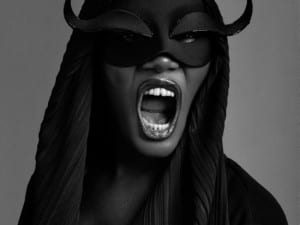Turner Contemporary is still a baby in gallery years. Only four major exhibitions old, its fifth still causes a sense of suspense amongst its home town: “will this one draw more people to our little town of Margate?” The town’s little seaside roads and alleys, lined with vintage shops and quirky cafes, await the answer holding their bait high for the expected and hoped for art-tourists. Following on from a Tracey Emin solo show that tore in two the views of locals and critics alike, Alex Katz’s exhibition, Give Me Tomorrow, has a lot (or little, depending) to live up to.
Painter, Katz, at the age of 85, is known for his work during the late 1950s as part of the first wave of the New York School. His subjects and often block-colour, flat-ground style have meant that he is often commonly associated with Pop Art (pre-Lichtenstein) as well as American figurative painting. However, upon discussing his legacy and importance with him, he simply says, “I like beauty. I’ve always felt that I’ve wanted to bring something ‘up’ to people rather than ‘down.’ That’s all.”
The first room, Alex Katz On Painting, features a selection of works chosen by the artist himself from the Tate collection. Each of the works in this room are said to have importance to Katz, spanning time, place and style, from Thomas Lawrence’s Miss Caroline Fry (1827) to Marlene Dumas’s depiction of blind and throat-slashed St Lucy to Turner’s Seascape With Storm Coming On. This small gallery is an extremely pleasant and enlightening look at Katz from a rare and different angle. Ironically, however, when Katz is asked on the day of his opening by a local journalist whether or not he likes Turner, he replies, rather comically, “no, I don’t particularly like Turner”. As a gallery dedicated to the legacy of JMW Turner, Turner Contemporary are obliged to continually exhibit at least one of the artist’s works whatever the exhibition, so it is easy to wonder whether the Turner in the Alex Katz On Painting space is there to simply fulfil such criteria. Even if the painting is an intruder, however, it is a rather magnificent one.
The second room is home to some of the artist’s most recent work, some large-scale paintings. Green Reflections 3 is charming in a way; the darker lily-pad-like-patches that appear here and there across the flat back-ground resemble a Monet seen through an unfocused microscope, their shapes somewhat formless and blurred, interspersed with flickers of white light. Little else in this room is overly striking however, apart from Beige Ocean, a painting depicting a tide of diagonal waves in off-whites and yellow. A more special and quiet piece of work lies around the corner from this room in the corridor behind it. Five tiny pieces, easy to miss, are hung here. These tiny collages, cut from coloured paper, span 1955-1959, a time when Katz was reacting against abstract expressionism. Katz’s pallet here is exquisite; a bright coral sea against a soft steel grey sky, a brown horizon, orange sun and pink sky, flecked with deep turquoise clouds, a pastel-yellow car haphazardly cut-out, little wonky grey wheels, bonnet looking out into a subdued sky. Little worlds of perfection lie within these mismatched frames.
The final room of the exhibit features work focusing on Katz’s muse, his wife Ada, as well as other portraits. A cut-out (oil on aluminium) titled Coleman Pond takes centre-stage here. The sculptural element of this piece does add variety to the overall show, but does little else. A much more arresting piece of work lies behind: Eleuthera, a huge four-panelled painting depicting eight, elegant females (who appear like models, but are actually the artists friends and family) in Nomal Kamali-designed bathing costumes. This stunning piece is impressive in, not only size, but also colour, spacing and in the precise and sensitive characterisation of each individual face. Katz’s ability to capture personality and expression in his portraiture work is demonstrated again in Isleboro Ferry Slip where the artist’s son is depicted in a comfortable and self-assured manner with, behind, a more enigmatic and perhaps less confident figure. The young pouted lips, squinting eyes and mane of blonde hair over stooped shoulders is spot on. The images of Ada in this room are extremely pleasant and heart-warming, but only a few, such as Ada and Edwin on the Beach, have lasting impact.
Give Me Tomorrow is certainly an interesting show to go to, as it provides something of a new perspective on an influential painter who has had a well-respected and successful career for the last half century. Although this exhibition is not quite seamless, there are some gems which are worth travelling to take a look at. It is undeniable that Katz’s way with colours and portraiture hold a sense of magic and perfection; the bright yellows and soft pastel skies and beaches seem to cling to summers gone: the glitter of past glamour, optimism, love and happiness. It is perhaps, to put it simply, a perfect exhibition to visit on a rainy day.
Alex Katz: Give Me Tomorrow, until 13 January 2013, Turner Contemporary Rendezvous, Margate, Kent, CT9 1HG.
Claire Hazelton
Credits
1. Alex Katz, Eleuthera, 1984, Oil on linen, 305 x 670.5 cm Private Collection, Courtesy Galería Javier López, Madrid © Alex Katz/Licensed by VAGA, New York, NY.
2. Alex Katz, Penobscot, 1999, Oil on board, 229 x 305 cm © Alex Katz/Licensed by VAGA, New York, NY ARTIST ROOMS Acquired jointly with the National Galleries of Scotland through The d’Offay Donation with assistance from the National Heritage Memorial Fund and the Art Fund 2008.
3. Alex Katz, Round Hill, 1977, Oil on Linen, 180.3 x 243.8 cm Los Angeles County Museum of Art, Partial and Promised Gift of Barry and Julie Smooke Art © Alex Katz/Licensed by VAGA, New York, NY Digital Image © 2012 Museum Associates / LACMA.





